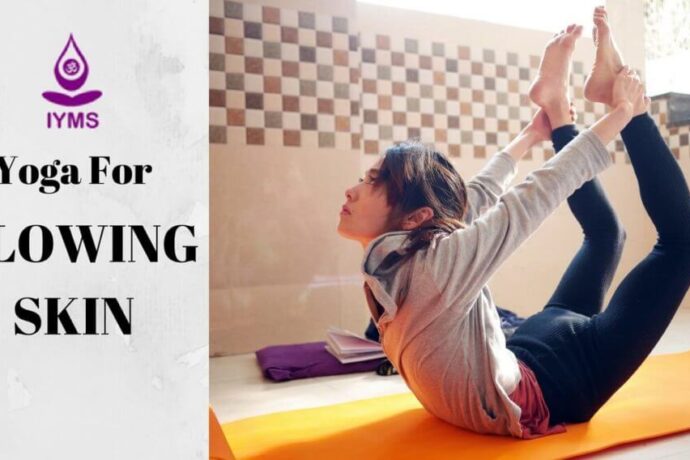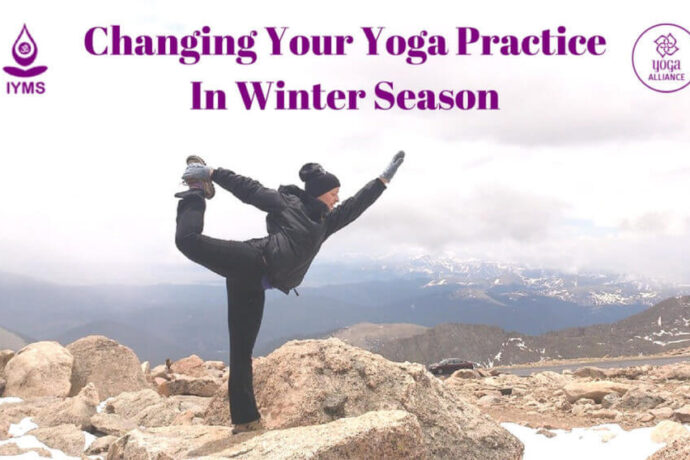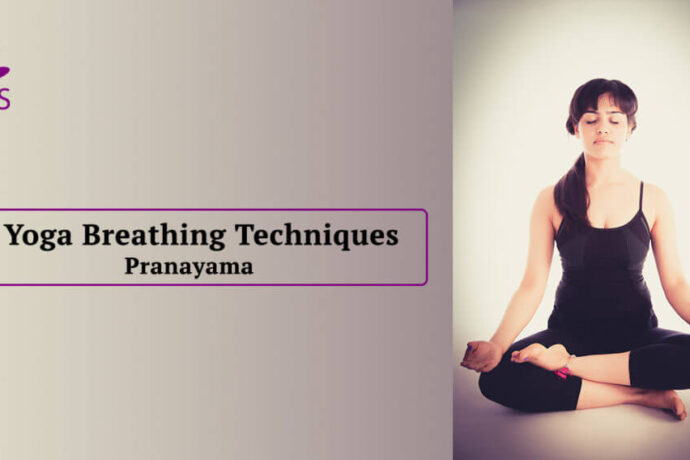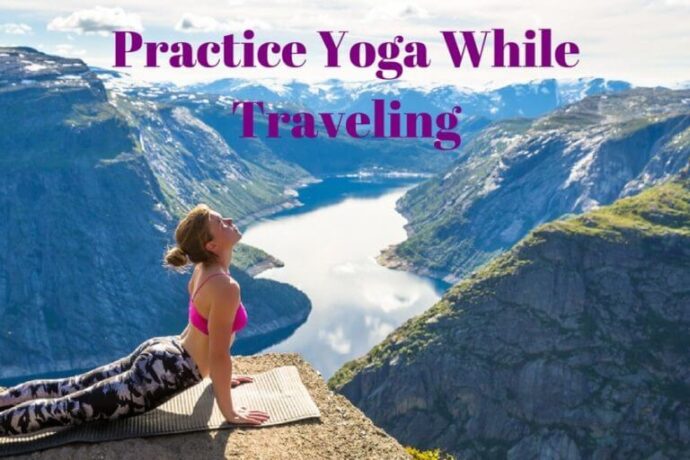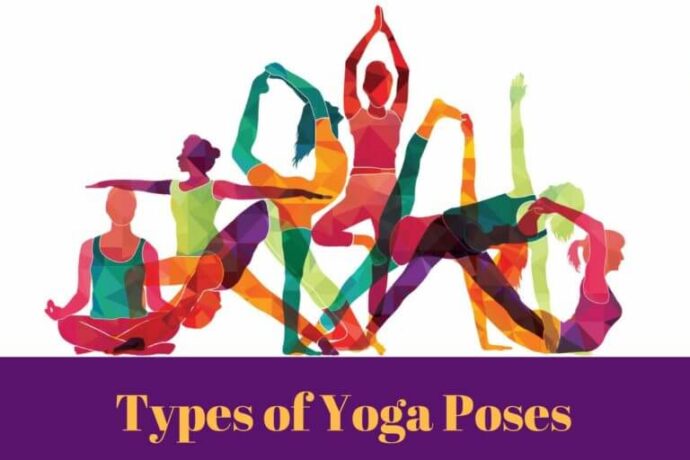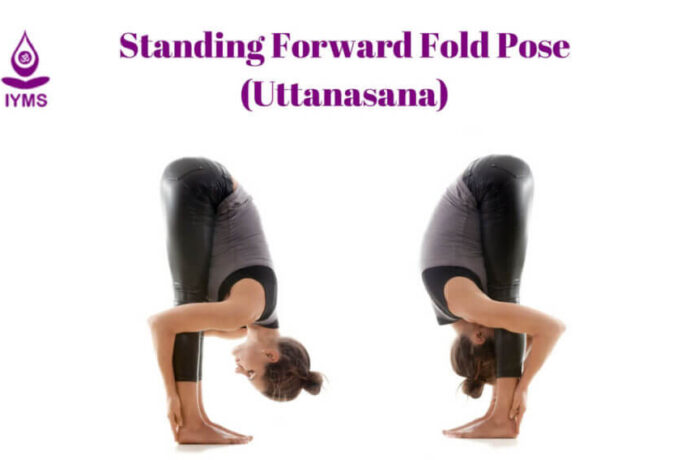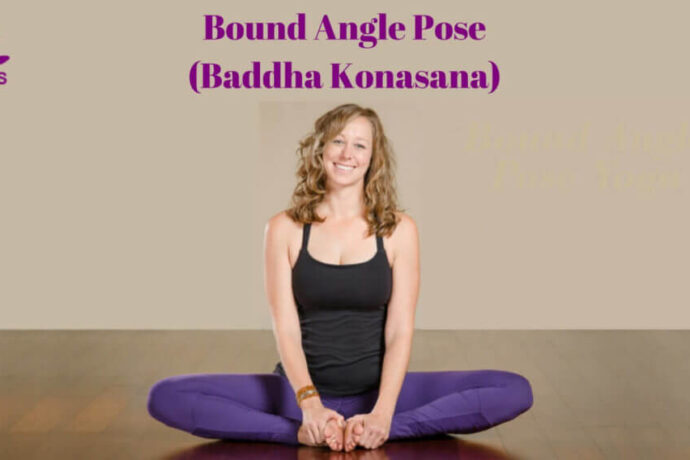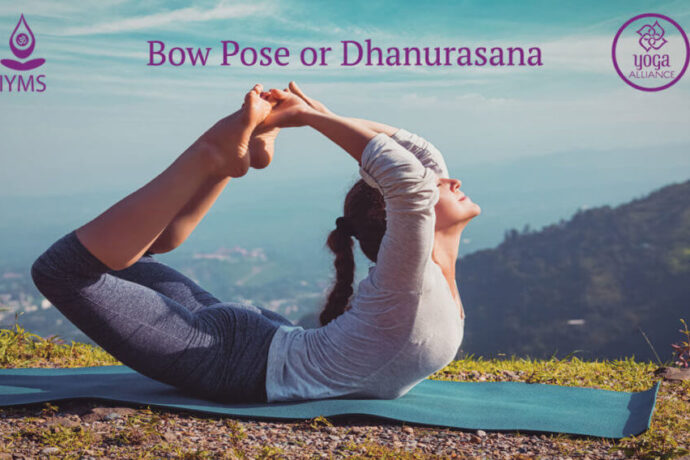The bridge pose Sanskrit name is Setu Bandhasana. “Setu” means bridge, “bandha” means lock while “asana” means pose. The asana is called the bridge pose because when it is correctly done, the body’s posture resembles a bridge.
A type of backbend pose, this asana starts out as in the supine position, eventually making you lift your torso up with your knees bent, and head and feet firmly on the floor. Like all back bends, this asana helps opens your chest, strengthens your back, thighs and abdomen. However, this posture also imbibes some of the benefits of an inversion, as the chest is higher than the head.
Pose Information
- Yoga Pose English Name: Bridge Pose
- Sanskrit Name: Setu Bandhasana or Setu Bandha Sarvangasana
- Pose Level: Intermediate
- Pose Type: Backbend
Preparatory Poses
- Cobra Pose or Bhujangasana
- Upward Facing Dog Pose or Urdhva Mukha Svanasana
- Hero Pose or Virasana
- Supine Bound Angle or Supta Baddha Konasana
- Belly Twist Pose or Jathara Parivartanasana
Follow-up Poses
- Cobra Pose or Bhujangasana
- Supported Shoulderstand or Salamba Sarvangasana
- Upward Facing Dog Pose or Urdhva Mukha Svanasana
- Wheel Pose or Urdhva Dhanurasana
Read on for more information about the bridge pose exercise.
How to Do a Bridge Pose?
Remember that your neck and head must be firmly on the floor, and that your torso is raised up, supported by your legs. Follow these bridge pose instructions, and you’ll soon be on your way to doing it like a pro:
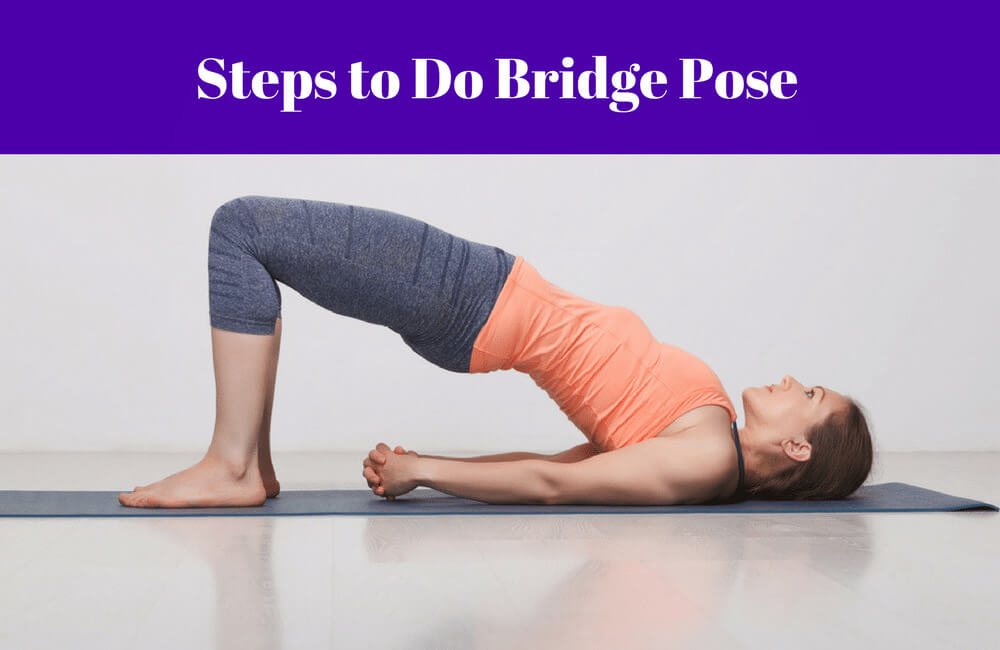
Step 1
Lie in a supine position: lie on your back with your arms by your sides and palms facing down.
Step 2
Bend your knees, bringing your heels close to your buttocks. The gap between your feet should be hip-wide. Ensure your feet are parallel to each other.
Step 3
Exhaling, raise your hips upwards. Support your weight with your buttocks but do not clench them.
Step 4
Next, with the help of your arms, raise your back off the floor. At this point, ensure that your hips and thighs are almost parallel to the floor.
Step 5
Bring your hands together on the floor and clasp them below your pelvis by interlacing the fingers.
Step 6
Breathing slowly, maintain this pose for about 4-8 breaths depending on your stamina and level of expertise. If you like long holds, you can take about 12 breaths too.
Step 7
When you wish to end, slowly exhale and begin lowering your hips, then your chest.
Bridge Pose Common Misalignment
Bridge pose mistakes are easy to make, especially with the alignment of your body. Ensure that you learn the pose under a qualified instructor, or you might end up with a neck injury. Follow these bridge pose tips to do this asana correctly:

1. Head
Your head must rest on the mat with your chin slightly raised up. Do not let your chin touch your chest. There must be a slight gap between your neck and the floor, for this posture to be correct. Also, do not move your head left or right during the asana as it might result in neck injury.
2. Feet
The Setu Bandhasana starts in the supine position. But to ensure that your feet have a hip-wide gap between them, you can start by sitting down. Placing your feet at the correct distance at this point will ensure that you have solid balance, and this will further help you align your knees with your ankles.
3. Unsupportive shoulders
In this asana, the bridge is held up by your arms, not your shoulders. Your shoulders must be pushed out so that the chest is raised and your upper body is held up by your arms.
4. Thigh squeeze
To get a sense of how the stretch must feel on your thighs, hold a block between your thighs. Squeezing the block will stretch your inner thigh muscles, which is the desired effect.
5. Hip rotation
Some people find that their knees are either pointing outwards or inwards. The correct position is achieved when your feet are parallel and directly below your knees.
6. Wrists
If you are clasping your hands below your hips, ensure that you do not rest your body weight on your wrists. Stretch your arms by pressing your palms together, this will reduce the strain on your wrists.
Bridge Pose Health Benefits
The bridge pose is a complex one. But if you master it, the asana can do wonders for your body and mind. Although strenuous, it effectively massages your body, with the accompanying relaxation of the mind. Take a look at 10 bridge pose yoga benefits:
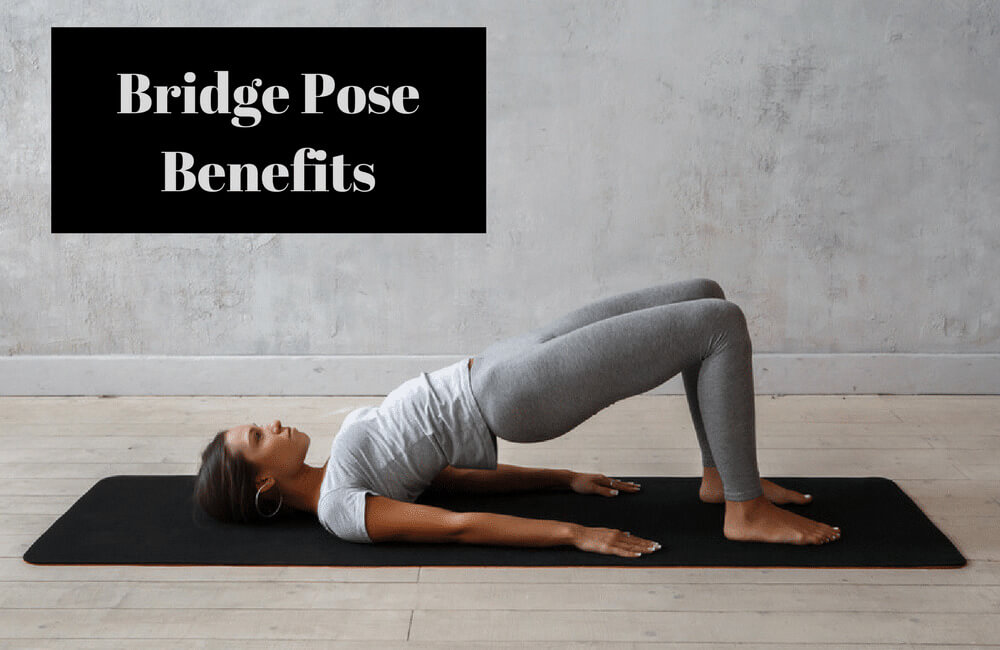
1. Activating the Heart Chakra
As the asana opens up your chest, it improves breathing, and by extension blood circulation. Due to this, it can be beneficial with respiratory problems. Opening the chest also activates the heart chakra, which is located in the middle of your chest. This opens the door for positive feelings such as love and kindness to guide you, instead of letting negative feelings such as anger and bitterness to rule your soul.
2. Strengthens your Legs and Feet
As your feet take quite a bit of your body weight, this asana strengthens this extremity, and helps with all standing asanas. It also exercises your inner thighs and hamstrings.
3. Open Shoulders
Sitting at a desk can cause your shoulders to accumulate a lot of tension and tightness. This yoga pose opens your chest and also helps stretch your shoulders, and strengthens your upper back muscles.
4. Open Hips
As long office hours become the norm, people lose the flexibility of their hips. This reduces the ability of the hips to share the body weight, increasing the pressure on the spinal column. If left unaddressed, this can cause pain and other back-related conditions. This yoga asana helps in opening your hips joints and reversing the flexion of hip flexors.
5. Alleviates Back Pain
People exercise bridge pose for lower back pain. This posture is a great way to unwind and ensure your back is in good health.
6. Enhanced Energy and Improved Creativity
The focus required for this asana calms your mind and stimulates the adrenal glands which regulate a number of hormones including the stress hormones. This frees your mind to use its full potential creatively.
7. Alleviates Menstrual Discomfort
The bridge pose is good for relieving menstrual If you’re on your period, use bolsters to take your body weight so that you give your body the rest it requires and yet energizes it by doing the posture. Hold the pose for a couple of minutes. It can also help in alleviating the discomforts of menopause.
8. Inversion
Because the Setu Bandhasana places your chest higher than your head, it also gives you the benefit of an inversion even if you don’t have the skill and stamina to do a full inversion. The inversion can help your mind focus better and calm you. The calmness helps reduce stress and anxiety, enabling you to go about your daily life in a more systematic manner.
9. Muscle awareness
In the bridge posture, you do not place your body weight on the muscles of the buttocks. Thus, to maintain the lift, you use the muscles of your thighs, which you will probably be unaware of until you do this pose.
10. Calming effect
Once you are able to go beyond the effort required to maintain the bridge pose, you can feel what the asana does for your mind. Apart from the satisfaction of performing the pose correctly, the position of the head in the bridge posture helps calm your body.
Bridge Pose Precautions
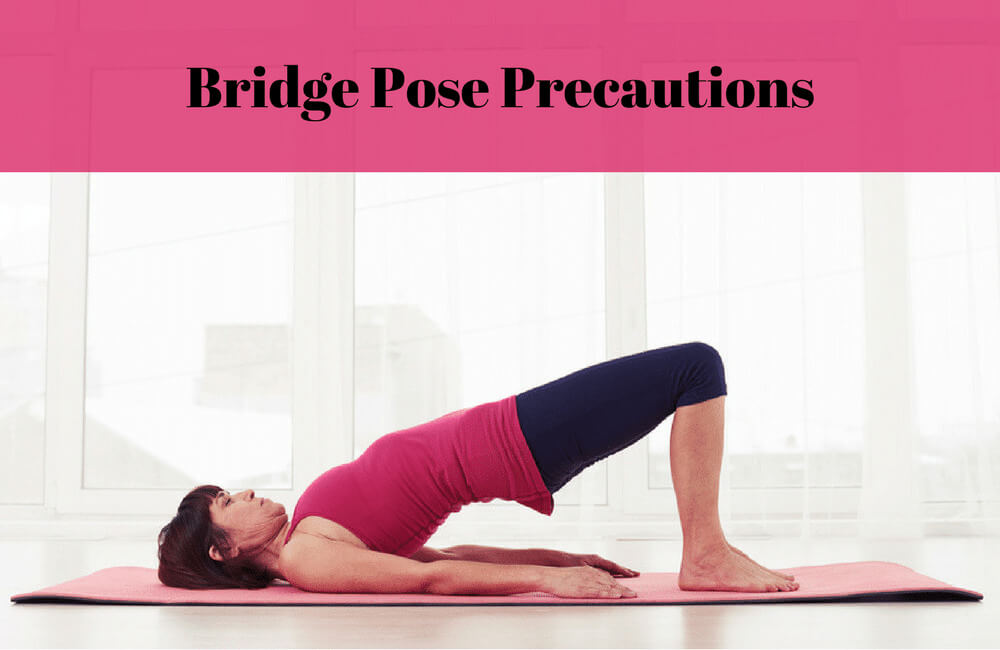
Bridge pose for beginners could be tricky, make note of following precautions:
- Don’t move your shoulders away from your ears abruptly. Move slowly, and do not hyperextend the movement. If you do, you could do yourself an injury.
- While raising your chest off the floor, make sure that you do not move your head and bring your chin towards your chest.
- Moving your head right or left during the pose can cause neck injury.
- Raise your chin slightly to ensure a small gap between your neck and the floor. Your head however, must remain on the floor.
- Contrary to instinct, your back and buttocks shouldn’t form an extended graceful arch. When in position, pull in your hips so that the tailbone moves towards the pubic bone.
- The gap between your knees and feet must be the same. If your knees tend to spread wider than your feet, you can use a yoga block between your thighs for support.
- Your knees must be right above your ankles.
- At no point must you exert your body to stretch more than it can. Your body’s flexibility might vary from day to day. If occasionally you find your body tighter than it usually is, do not hyperextend its movements. Instead, you could use supports such as blocks so that you can still do the asana, but in a wholesome manner instead of a punishing one.
Bridge Pose Modifications
Although the bridge yoga asana is difficult to achieve without an instructor to correct misalignments, it is not difficult to master. You can try following a restorative version of the pose to make it easier:
Bridge Pose With a Block or Bolster

- If you have trouble lifting your hips according to the correct alignment, try using blocks. Place the block or bolster under your sacrum, the spot above your tailbone. You can place your weight on the block instead of straining your back.
- For a restorative effect, you can rest your body on a bolster that supports your shoulders, back and knees. Use another one for your ankles.
- If you are unable to clasp your hands on the floor below your back, then let your arms remain on the sides of your body. Keep the palms face down.
Bridge Pose Variations
Once you’ve mastered the full-bridge pose, there are several bridge pose variations that you can try to further build your stamina. Here are two ways you can modify it to make it more challenging:
First Variation
 You can give your spinal column a thorough work out by slightly tinkering with the pose.
You can give your spinal column a thorough work out by slightly tinkering with the pose.
Once you have achieved the bridge pose asana, you can deepen the pose by lifting your heels slightly, and pushing your tailbone towards the pubis.
You can release it by slowly coming down by rolling your back, feeling each vertebra relax as it comes down. Go back up slowly, feeling your whole back stretch, so that your spinal column gets a thorough work over.
One-Legged Bridge Pose (Eka Pada Setu Bandhasana)
 You can try this extended bridge pose, bringing your one knee up to your torso and then get back into the original bridge pose.
You can try this extended bridge pose, bringing your one knee up to your torso and then get back into the original bridge pose.
While exhaling, bring your right knee up to your torso. As you inhale, extend your leg upwards so that it is straight and perpendicular to the floor. Hold this advanced bridge pose for about 30 seconds, and go back to the original pose as you exhale. Repeat this procedure with your left leg.
Conclusion
Getting the Setu Bandhasana or bridge pose steps right and doing it regularly is one of the better things that you can do for your mind and body. That said, it’s important to be aware of bridge pose precautions. Better yet, the first few times you try it, make sure that a qualified instructor is present to correct alignments so that you don’t end up unwittingly injuring yourself.
